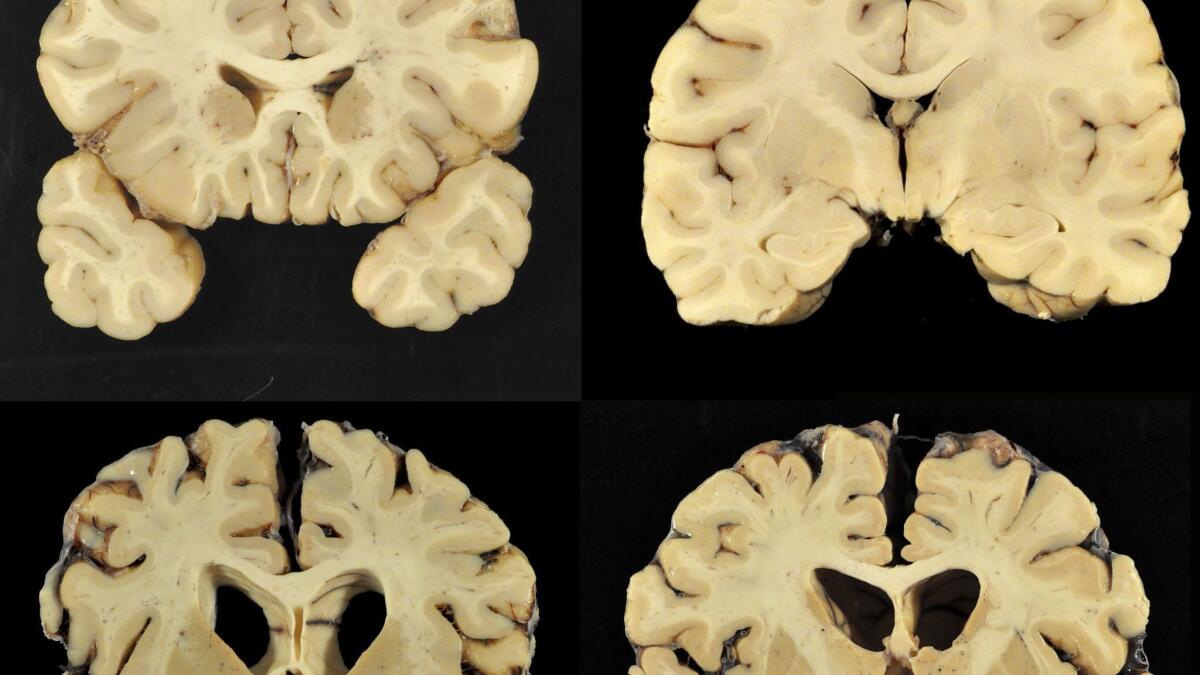Op-Ed: The NFL is the fox in the henhouse of football-injury research

- Share via
Last month, the NFL announced that it is awarding more than $35 million in grants to fund research on brain injuries. The recipients of the league’s largesse include researchers at prestigious academic institutions such as Boston Children’s Hospital, Harvard Medical School, the University of Pittsburgh and UC San Francisco. Peter Chiarelli, who chaired the scientific advisory board to allocate the NFL’s funds, said the league did not influence the panel in any way: “We were totally independent.”
We’ve seen this story line before. In 2012, the NFL donated $30 million to the National Institutes of Health for brain research. The NFL similarly claimed that there were no strings attached. But just last year, that NFL-NIH partnership fell apart after a congressional investigation revealed that the league wanted the NIH to avoid funding researchers at Boston University who had found damage in the brains of dozens of former pro football players. Instead, the NFL sought to redirect that money to league-affiliated scientists.
Apparently, we are meant to believe that one year later, the NFL has turned over a new leaf.
NFL-funded research into the relationship of football and brain trauma is fundamentally conflicted.
“The research is not directed by the NFL nor does any other outside organization exercise control over the study design, implementation, results or conclusions,” said University of Pittsburgh spokesman Joe Miksch of the way that school was using its grant.
It would be wonderful if this time, the league truly has nothing but the interests of science and players’ health in mind. But unfortunately, given the NFL’s track record of denying and downplaying the risks of traumatic brain injury, we should remain skeptical. Fully acknowledging the possible risks of tackle football, a sport in which full-body collisions are inherent and repetitive brain trauma is common, could create a crisis for the NFL. Instead, the league has emphasized tweaking the rules of the game and the design of helmets, despite a lack of evidence that the shape and materials in helmets or modified tackling techniques can significantly cut down on brain trauma.
NFL-funded research into the relationship of football and brain trauma is fundamentally conflicted. It would and should raise eyebrows if even the most dedicated, accomplished lung cancer researchers accepted money from Philip Morris to fund their studies. Similarly, the NFL’s participation risks the credibility of research that will shape what we know about brain injury and football.
Enter the Fray: First takes on the news of the minute from L.A. Times Opinion »
The largest of the NFL grants — $14.7 million — will go to a study led by Dr. William P. Meehan III on the neurological health of former NFL players. I find this a troubling award.
Meehan was a lead author of the American Academy of Pediatrics’ 2015 study and policy statement “Tackling in Youth Football.” The report made no hard and fast recommendation against tackling for children of any age, even though the AAP recommends against body checking for hockey players younger than 15 in order to prevent concussions. The study concedes that fewer contacts might result in fewer injuries, but it settles primarily on suggesting that youth football players engage in “proper” contact techniques, such as “heads up” tackling in which players are taught to lead with their shoulders. In other words, the NFL is funding a study by a researcher who participated in crafting weak guidelines to protect children who play football.
The history of NFL involvement in brain research could undermine the credibility of scientific publications and medical guidelines addressing the urgent public health problem of brain injury in sports. Academic research centers, hospitals, physicians and researchers must make public trust and the integrity of their research their highest priorities. The federal government must robustly fund public agencies such as the NIH to conduct independent brain injury research. We should all be aware that when it comes to the NFL and brain injuries, strings are likely to be attached.
Kathleen Bachynski is a postdoctoral fellow in medical ethics at NYU Langone Health. She is completing a book on the history of youth football safety debates.
Follow the Opinion section on Twitter @latimesopinion and Facebook.
More to Read
A cure for the common opinion
Get thought-provoking perspectives with our weekly newsletter.
You may occasionally receive promotional content from the Los Angeles Times.









